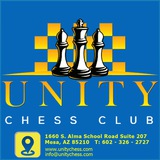Magnus Carlsen is the FTX Crypto Cup champion for the second year in a row after holding off a fierce challenge from Indian teen Praggnanandhaa.
Norway's World Champion overcame the talented 17-year-old with a game to spare in their final round shootout for the title. In doing so, Carlsen notched up a third win of the Meltwater Champions Chess Tour season and his first Major win. The result also stretches his lead at the top of the $1.6 million Tour leaderboard and wins him the tournament's unique NFT trophy.
Pragg and Carlsen were neck-and-neck throughout the whole tournament with the youngster putting in a real statement performance throughout. But in Round 7 of the all-play-all event Pragg faced the real acid test - world number 1 Carlsen. The youngster had chances in the first game and then had to defend like a lion in game 2. Finally, he ran out of steam in the third.
Norway's World Champion overcame the talented 17-year-old with a game to spare in their final round shootout for the title. In doing so, Carlsen notched up a third win of the Meltwater Champions Chess Tour season and his first Major win. The result also stretches his lead at the top of the $1.6 million Tour leaderboard and wins him the tournament's unique NFT trophy.
Pragg and Carlsen were neck-and-neck throughout the whole tournament with the youngster putting in a real statement performance throughout. But in Round 7 of the all-play-all event Pragg faced the real acid test - world number 1 Carlsen. The youngster had chances in the first game and then had to defend like a lion in game 2. Finally, he ran out of steam in the third.
Unity Chess Club
A subtle checkmate in 3 moves problem by Sam Loyd. White to move
The Answer is: 1.Qh1! hxg5 (1...Kxg5 2.Ng2! hxg2 3.h4#) 2.Qg2! hxg2 3.Nxg2#
BISHOP AGAINST PASSED PAWNS
The bishop is a skilful defender when there are connected passed pawns. It can stop a whole row of passed pawns. But stopping two passed pawns which are far apart is a different kettle of fish.
The bishop is a skilful defender when there are connected passed pawns. It can stop a whole row of passed pawns. But stopping two passed pawns which are far apart is a different kettle of fish.
Imagine the position without the kings. Then the only square from which the bishop can successfully stop the pawns is d3. If it is on any other square, White will catch the bishop out by a pawn sacrifice! With the kings on the board, there is an exciting struggle which leaves White in the end with the upper hand.
It would be wrong to start with the other pawn: 1. g6? Kh6 2. Kf6 Bd5 3. a6 Bc4 4. a7 Bd5, and White does not have a good move.
A waiting move such as 1. ... Bg2 is followed by 2. g6 Kh6 3. Kf6 Ba8 4. g7! Bd5 5. Ke5 Bg8 6. a7, wmnmg.
Now it is the turn of the g-pawn. 2. a7? would now be bad: 2 .... Bb7 3. Kf6 Bd5 4. g6 Kh6 S. g7 Kh7, and White can no longer win.
Sometimes a piece is sacrificed for far-advanced passed pawn. The idea is to get it back with compound interest. This works beautiflllly in the following game fragment:
